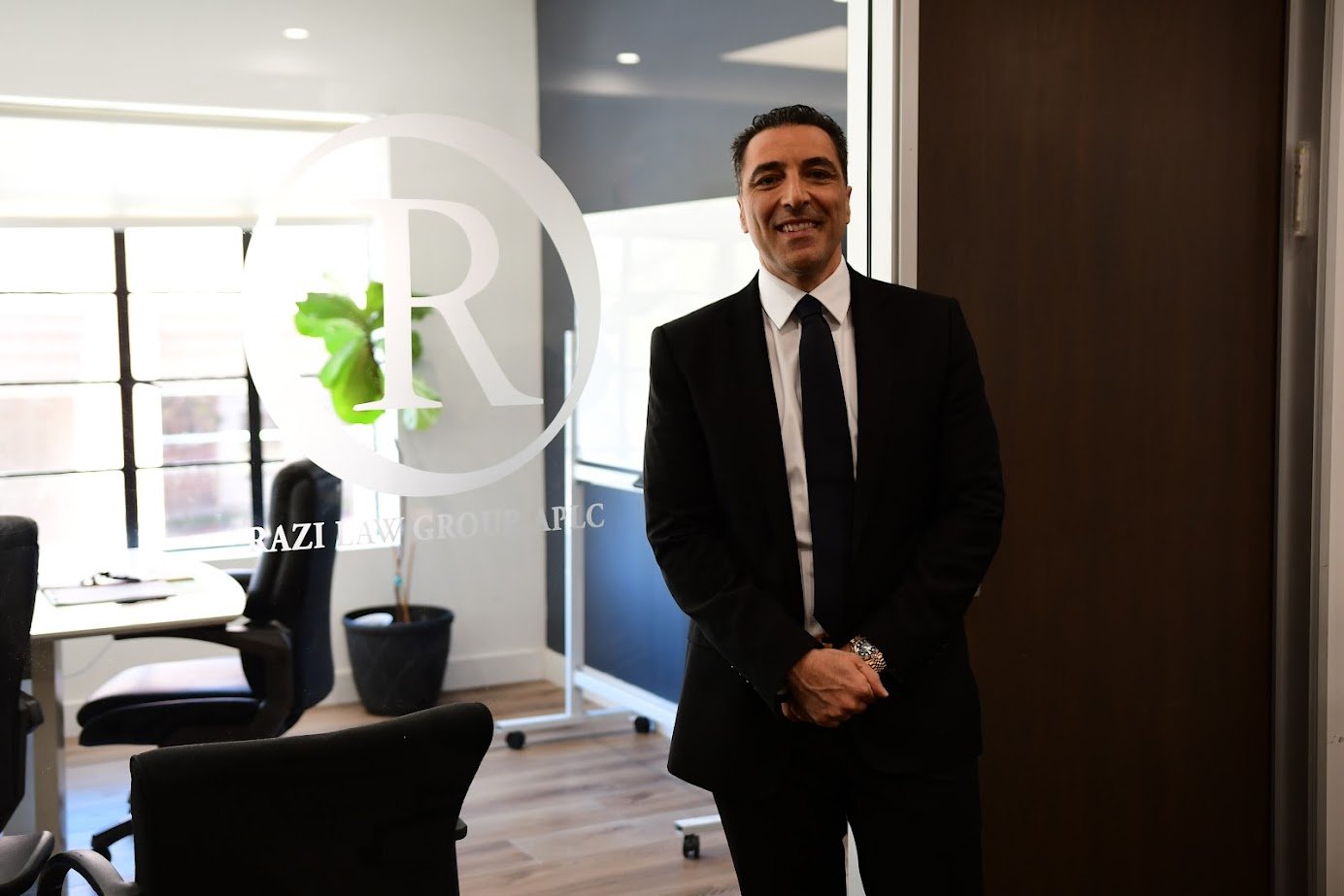Let’s cut to the chase: real estate investing isn’t for the faint of heart. You pour capital into properties, trusting the operators to navigate markets, manage tenants, and ultimately, deliver returns. But what happens when that trust fractures? When investors feel blindsided, alleging the numbers didn’t add up and promises weren’t kept? That’s precisely the storm engulfing Ashcroft Capital right now.
In February 2025, the New Jersey courts became the battleground. A group of investors filed suit (Cautero v. Ashcroft Legacy Funds, LLC), lobbing serious accusations at the prominent real estate investment firm. Overstated returns. Breached fiduciary duties. A distinct lack of transparency. Even allegations of misusing investor funds. It’s the kind of lawsuit that sends shivers down the spine of any limited partner and makes GPs scramble for their disclosure documents. Ashcroft’s response? A firm, unequivocal denial. They point the finger squarely at the macroeconomic chaos we’ve all lived through – skyrocketing interest rates, stubborn inflation – arguing these forces, not managerial missteps, torpedoed performance. Crucially, they insist every projection and risk was laid bare in the Private Placement Memoranda (PPM), the sacred text of private equity deals.
So, who’s right? Frankly, that’s the multi-million dollar question boiling down in the legal crucible. This isn’t just about one firm; it’s a pressure test for transparency and accountability in an asset class where opacity can sometimes feel like a feature, not a bug. Strap in, we’re diving deep.
The Anatomy of the Ashcroft Capital Lawsuit: Claims vs. Defenses
What Exactly Are Investors Alleging?
The lawsuit paints a picture that, if true, would be deeply troubling for any investor. It boils down to a few core grievances:
- Overstated Returns & Performance Misrepresentation: Investors claim Ashcroft presented overly rosy projections and historical returns, creating unrealistic expectations about potential profits. The suit suggests these figures weren’t merely optimistic but potentially deceptive, masking underlying issues within the portfolio. Did the marketing materials tell the whole story, or just the shiny parts?
- Breach of Fiduciary Duty: This is the heavyweight allegation. Investors entrusted Ashcroft with their money, expecting the firm to act solely in their best interests – the very definition of a fiduciary duty. The lawsuit alleges Ashcroft prioritized its own fees and interests over those of the investors. Think: questionable fee structures, decisions benefiting the sponsor more than the LPs, or failing to act diligently.
- Lack of Transparency & Withholding Material Information: Ever felt like you were kept in the dark? That’s the core of this claim. Investors argue Ashcroft failed to provide timely, accurate, and complete information about the true state of the investments, particularly as market conditions deteriorated. Crucial details about property performance, financial health, and emerging risks were allegedly obscured or delayed. Transparency isn’t just nice to have; it’s fundamental to informed decision-making.
- Misuse of Investor Funds: This is perhaps the most explosive allegation. The suit suggests investor capital wasn’t used strictly for the purposes outlined in the fund agreements or PPMs. While specifics often remain confidential in initial filings, the implication is that funds may have been commingled improperly or diverted to support other ventures or cover unrelated expenses. Ashcroft vehemently denies this.
Ashcroft Capital’s Vigorous Defense: “It Was the Market, Not Us”
Ashcroft isn’t taking these allegations lying down. Their defense strategy is clear and forceful:
- Force Majeure: The Macroeconomic Avalanche: Their primary argument is simple yet powerful: unprecedented and unforeseeable market forces derailed performance. The Federal Reserve’s aggressive interest rate hikes dramatically increased borrowing costs, squeezing cash flow on leveraged properties. Simultaneously, rampant inflation drove up operating expenses (maintenance, insurance, labor) while potentially softening rental growth. Ashcroft contends any operator would have struggled mightily in this environment. Performance issues, they argue, stem from this systemic shock, not mismanagement.
- Full Disclosure via PPMs: This is their legal bedrock. Ashcroft asserts that all material risks, including the potential impact of interest rate fluctuations, inflation, economic downturns, and specific asset class risks, were explicitly detailed in the Private Placement Memoranda provided to investors before they committed capital. They argue investors were sophisticated enough to understand these disclosures and the inherent risks of real estate investing. “You were warned,” is the implicit message. The PPM wasn’t just paperwork; it was the rulebook.
- Denial of Wrongdoing: Crucially, Ashcroft categorically denies breaching any fiduciary duties, misrepresenting performance, lacking transparency, or misusing funds. They characterize the lawsuit as an attempt by a disgruntled investor group to recoup losses stemming from broader market conditions, shifting blame away from their own investment decisions or risk tolerance.
Investor Allegations vs. Ashcroft Defenses: The Core Conflict
| Feature | Investor Claims (Plaintiffs) | Ashcroft Capital’s Defense |
|---|---|---|
| Performance Issues | Overstated projections/returns; misleading reporting | Caused by unforeseeable macro forces (rates, inflation) |
| Fiduciary Duty | Breached; prioritized sponsor fees/interests over LPs | Acted in good faith; managed diligently under extreme duress |
| Transparency | Withheld material info; delayed/poor communication | All material risks disclosed in PPMs; ongoing comms adequate |
| Use of Funds | Potential misuse; diversion/commingling | Categorically denied; funds used per agreements |
| Root Cause | Managerial misconduct, misrepresentation | External market catastrophe beyond reasonable control |
YOU MAY ALSO LIKE: The 72 Sold Lawsuit: What Happens When a Small Batch Sparks a Legal Firestorm
The Ripple Effect: Ashcroft’s Scramble to Rebuild
Regardless of the lawsuit’s ultimate outcome, the reputational damage is real. Investor confidence took a direct hit. Ashcroft’s response hasn’t been limited to legal filings; they’ve launched a multi-pronged internal offensive aimed at damage control and future-proofing:
- Internal Audits: Thorough reviews of financials, fund operations, fee structures, and compliance practices. This is about finding any potential weak spots themselves before regulators or plaintiffs’ attorneys do. It signals a willingness (or necessity) to look under the hood.
- Enhanced Compliance & Governance: Beefing up internal controls, oversight committees, and reporting lines. Think clearer separation of duties, more robust checks and balances, potentially even adding independent voices to advisory boards. Governance isn’t sexy, but it’s the bedrock of trust.
- Upgraded Investor Communication: Moving beyond the bare minimum. Expect more frequent updates, clearer explanations of performance drivers (good and bad), proactive discussions of challenges, and potentially more accessible formats (webinars, dedicated portals, direct access to asset managers). Silence breeds suspicion; communication, done right, builds bridges.
- Revised Disclosures & Reporting: Scrutinizing and likely overhauling PPM language, quarterly reports, and performance metrics. The goal? To make risks even more explicit, projections more conservatively framed, and actual performance data clearer and more contextualized. Hiding behind jargon won’t cut it anymore.
The Bigger Picture: Why This Lawsuit Matters Beyond Ashcroft
Look, this isn’t happening in a vacuum. The real estate private equity world has been under a microscope. Rising rates exposed leverage risks. The “easy money” era is over. Investors are more skeptical, more demanding. Regulatory bodies? They’re watching cases like this very closely, using them to gauge where industry practices might be falling short.
- A Test Case for PPM Reliance: How ironclad are those PPM disclosures really? Courts often defer to them, but if investors can prove material information was omitted despite the PPM, or that disclosures were buried in legalese, it could shift the balance. This case could redefine the “adequacy” of disclosure. Is boilerplate risk language enough when the storm hits?
- Fiduciary Duty in Tough Times: What exactly does “acting in the best interest of investors” mean when markets collapse? Does it require Herculean efforts to salvage returns, or simply avoiding self-dealing while weathering the storm? The outcome could clarify the standard of care expected during crises. It’s easy to be a fiduciary in a bull market; the bear market reveals true character.
- The Transparency Imperative: Ashcroft’s operational reforms highlight a trend: investors won’t tolerate radio silence anymore. Firms that proactively communicate challenges, explain decisions, and provide granular data will likely command more trust and capital in the future. Opacity is becoming a liability. Can you afford not to be transparent?
FAQs:
- What is the Ashcroft Capital lawsuit about?
Investors allege Ashcroft overstated returns, breached fiduciary duties, lacked transparency, and potentially misused funds. Ashcroft denies all, blaming severe market conditions (high rates, inflation) and asserting full compliance with disclosures. - Where was the lawsuit filed?
The case (Cautero v. Ashcroft Legacy Funds, LLC) was filed in New Jersey state court in February 2025. - What is Ashcroft Capital doing in response?
Beyond vigorously defending the suit, they’ve launched internal audits, strengthened compliance/governance, improved investor communication frequency/clarity, and revised disclosures/reporting to enhance transparency. - Is Ashcroft admitting guilt by making these changes?
Absolutely not. Firms often implement operational improvements during litigation to demonstrate good faith, address perceived concerns (even if unfounded), and strengthen their overall position. It’s proactive crisis management, not an admission. - How does Ashcroft explain the underperformance?
They attribute it overwhelmingly to uncontrollable macroeconomic factors: the Federal Reserve’s rapid interest rate hikes significantly increasing borrowing costs and rampant inflation driving up property operating expenses, severely impacting cash flow. - What is a PPM, and why is it central to Ashcroft’s defense?
A Private Placement Memorandum (PPM) is the legal document detailing an investment’s terms, strategies, fees, and crucially, all material risks. Ashcroft argues investors were fully informed of the risks (like rate hikes and inflation) via the PPM before investing, shielding them from liability for losses stemming from those disclosed risks. - What happens next in the lawsuit?
Expect a long legal process: discovery (exchanging documents/data), depositions, potential motions to dismiss/summary judgment, and if not settled, a trial. Resolution could take years. Settlement remains a possibility at any stage.
The Road Ahead: Trust, Scrutiny, and the New Normal
Honestly, the Ashcroft Capital lawsuit feels like a symptom of a broader reckoning in private real estate. The era of cheap debt and seemingly effortless returns is over. The hangover is here, and it’s prompting uncomfortable questions about how firms operate, communicate, and prioritize investor interests when the tide goes out.
Ashcroft’s fate hinges partly on the courts dissecting those PPMs and fiduciary actions under a microscope. But perhaps more importantly, it hinges on whether their internal reforms ring true with existing and potential investors. Are the audits rigorous? Is the new communication genuinely transparent, or just more spin? Does the governance have real teeth?
Some experts believe this case, regardless of verdict, will accelerate an industry-wide shift towards greater transparency and stronger governance. Others worry it might just lead to even longer, more convoluted PPMs that few truly read. My take? Investors are voting with their feet – and their capital. Firms that embrace genuine openness, demonstrate unwavering fiduciary commitment, and communicate proactively, especially when delivering bad news, will be the ones that navigate this turbulent era and thrive. The others? Well, they might find themselves facing their own version of Cautero v. [Firm Name].
The Ashcroft saga is far from over. It’s a stark reminder that in investing, trust is the ultimate currency. Once spent, how hard are you willing to work to earn it back? What does true transparency look like to you as an investor?
READ ALSO: Isotonix Lawsuit and the Legal Battle Facing Market America











